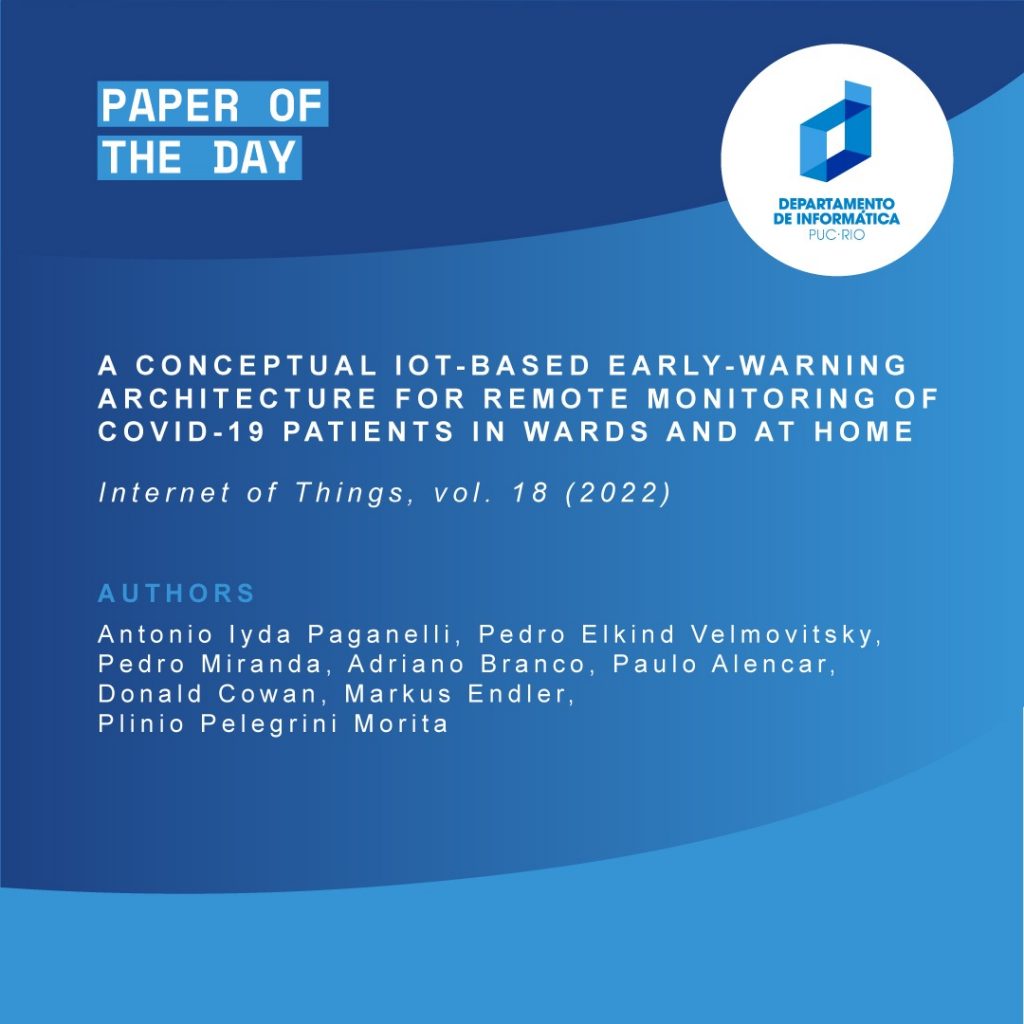
#paperoftheday
Title:
A conceptual IoT-based early-warning architecture for remote monitoring of COVID-19 patients in wards and at home
Venue:
Internet of Things, vol. 18 (2022)
Authors:
Antonio Iyda Paganelli, Pedro Elkind Velmovitsky, Pedro Miranda, Adriano Branco, Paulo Alencar, Donald Cowan, Markus Endler, Plinio Pelegrini Morita
Abstract:
Due to the COVID-19 pandemic, health services around the globe are struggling. An effective system for monitoring patients can improve healthcare delivery by avoiding in-person contacts, enabling early-detection of severe cases, and remotely assessing patients’ status. Internet of Things (IoT) technologies have been used for monitoring patients’ health with wireless wearable sensors in different scenarios and medical conditions, such as noncommunicable and infectious diseases. Combining IoT-related technologies with early-warning scores (EWS) commonly utilized in infirmaries has the potential to enhance health services delivery significantly. Specifically, the NEWS-2 has been showing remarkable results in detecting the health deterioration of COVID-19 patients. Although the literature presents several approaches for remote monitoring, none of these studies proposes a customized, complete, and integrated architecture that uses an effective early-detection mechanism for COVID-19 and that is flexible enough to be used in hospital wards and at home. Therefore, this article’s objective is to present a comprehensive IoT-based conceptual architecture that addresses the key requirements of scalability, interoperability, network dynamics, context discovery, reliability, and privacy in the context of remote health monitoring of COVID-19 patients in hospitals and at home. Since remote monitoring of patients at home (essential during a pandemic) can engender trust issues regarding secure and ethical data collection, a consent management module was incorporated into our architecture to provide transparency and ensure data privacy. Further, the article details mechanisms for supporting a configurable and adaptable scoring system embedded in wearable devices to increase usefulness and flexibility for health care professions working with EWS.
More in:
https://doi.org/10.1016/j.iot.2021.100399
#paper #remotemonitoring #IoT #research #technology #dipucrio


